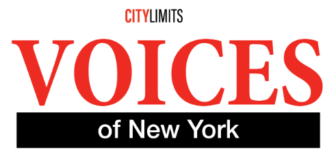
Ryuichi Miura/Shukan NY Seikatsu
Mr. Sunada tracing the names of Japanese victims of the 9/11 attacks during his visit to New York in October.
Read the original story in Japanese at Shukan NY Seikatsu
Translated by Rebecca Suzuki
On Aug. 4, 1994, a young man named Kei Sunada had just returned home to his Queens apartment after his shift at Nakagawa restaurant when he was shot and killed by a stranger. His father, Koichi Sunada, then a professor at Kyushu University, was attending a conference in San Jose when he received a call from his wife in Japan: “Kei was shot. He’s brain dead, but he’s waiting for you, so go to New York as soon as you can.”
Mr. Sunada arrived at the Elmhurst Hospital the next morning. He confirmed his son’s identity and tried to rouse him out of unconsciousness. Eventually, the 110th precinct of the NYPD came and led Mr. Sunada to the scene of the crime. He had to endure seeing the bullet hole left behind on the wall where his son was shot in the head, and hear how his son was found lying in a pool of his own blood. Mr. Sunada’s entire body was shaking from the guilt of not having been there to help his son and the overwhelming rage he felt.

Voices of New York spotlights ethnic and community reporting from around the city. Click here to read more.
After his loss, Mr. Sunada started a gun-control movement in Japan and became one of the plaintiffs of a 1999 class action civil law suit against the National Rifle Association and 32 American gun manufacturers, contending the manufacturers’ liability. They ended up winning the case, which was a first for the nation. Elisa Barnes, the lawyer who represented the case, went on to win the Robert F. Kennedy Award.
Mr. Sunada was in New York City last month for the first time in 12 years, since commemorating the 12-year anniversary of his son’s death, 25 years since he was killed.
On the afternoon of Oct. 26th, Mr. Sunada visited Ground Zero. At the memorial, he found the names of Japanese victims and traced over them with his hand. He then put his hands together in prayer.
“Victims of terrorism and victims of gun violence are different, but the pain felt by the families they left behind is the same,” he said.








